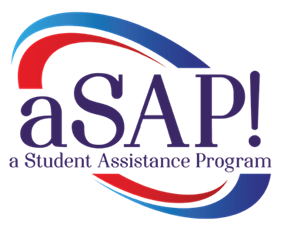The three common obstacles to developing and implementing an effective coordinated system of intervention and referral services are people, their processes, and the tools they use.
New Jersey Administrative Code 6A:16-8.1 requires all school districts to have a system of intervention and referral services as follows:
“District boards of education shall [must] establish and implement a coordinated system in each school building for the planning and delivery of intervention and referral services that are designed to ASSIST STUDENTS who are experiencing: LEARNING, BEHAVIOR, or HEALTH DIFFICULTIES; and to ASSIST STAFF who have difficulties in addressing students’ learning, behavior or health needs.”
A coordinated system of intervention and referral services is required, then why do most I&RS programs fail?
People
- Staff misperceptions of the purpose of intervention and referral services
- Staff misperceptions of the functions of intervention and referral services
- Staff resistance to the collegial, collaborative and consultative approach
- Staff abdication of sense of professional responsibility for student
For many students, their educational experience is very much like crossing a rickety bridge that spans high above a raging river. They need a safety net.
Change hearts and minds
First, change your school district’s perception of intervention and referral services from a method to refer general education students to a more restrictive educational program to a method to assist students who are experiencing learning, behavior, or health difficulties. Best practice coordinated systems of intervention and referral services support students experiencing difficulties without a change in placement or program type.
Second, change your school district’s perception of intervention and referral services from a program that assists students in a program that also assists staff. New Jersey Administrative Code 6A:16-8.1 clearly states “and to ASSIST STAFF who have difficulties in addressing students’ learning, behavior or health needs.”
Lastly, intervention and referral services must be viewed by staff as a collegial, collaborative, consultative, and supportive program that will assist them and encourage them to assist their peers. The focus needs to be less on the use of the word “referral” which implies the “handing over” of a student to intervention and referral services. Staff should never abdicate their responsibility to assist a student. But they should also never permit their pride or ego to cause a student to experience ongoing difficulties that can be addressed with assistance from the intervention and referral services team.
Process
- Using the system as a “process” to simply remove a student from a particular setting or program
- Using the system to transfer a student with difficulties away from a staff member who is unable or unwilling to assist the student
- Using the system as a “gatekeeper” for special education
I&RS should never be
Intervention and referral services should never be a “process” to remove a student who is experiencing learning, behavior, or health difficulties from the general education setting.
It should never be a “process” to transfer a student who is experiencing learning, behavior, or health difficulties from a teacher who is experiencing difficulties assisting the student to another. A change in teacher assignment is a “quick fix” that will not result in culture change.
And it should never be used as a prerequisite for a referral to the child study team. As per N.J.A.C. 6A:14-3 et seq.) “It should be noted that programs of intervention and referral services may not be used to delay obvious and appropriate referrals to special education. Schools are not permitted to create any barrier for the administration of appropriate evaluations to determine the existence or nature of students’ educational disabilities.”
New Jersey Administrative Code 6A: 16-8.2, requires districts to:
- Collect thorough information on the identified learning, behavior and health difficulties;
- Develop and implement action plans which provide for appropriate school or community interventions or referrals to school and community resources, based on the collected data and desired outcomes for the identified learning, behavior and health difficulties;
- Actively involve parents or guardians in the development and implementation of intervention and referral services action plans;
- Coordinate the access to and delivery of school resources and services for achieving the outcomes identified in the intervention and referral services action plans;
- Maintain records of all requests for assistance and all intervention and referral services action plans, according to the requirements of 34 CFR Part 98, 34 CFR Part 99, 42 CFR Part II, N.J.S.A. 18A:40A-7.1, N.J.A.C. 6A:16-3.2 and N.J.A.C.6:3-2.1;
Tools for the job
Highly effective school districts provide their staff with a fully-stocked tool chest to meet the New Jersey Administrative Code requirements. HIBsterVention is the premier tool chest that contains all of the tools of the intervention and referral services trade.
HIBsterVention is a cloud-based software program that enables school districts to develop and implement a highly effective and efficient coordinated system for the planning and delivery of intervention and referral services:
- Staff access to a comprehensive catalog of best practice interventions
- Staff to make data-based decisions
- The ability for staff to independently develop an electronic pre-referral plan
- The ability for staff to rate the effectiveness of each pre-referral intervention
- The ability for staff to submit a pre-referral plan to building a team if assistance is needed
- The ability for building a team to develop, implement and case manage intervention and referral services plans
- The ability for building a team to submit intervention and referral services plans to the child study team or Section 504 team for consideration
- The ability for building and district teams to hold virtual meetings

Available in Pennsylvania as:

